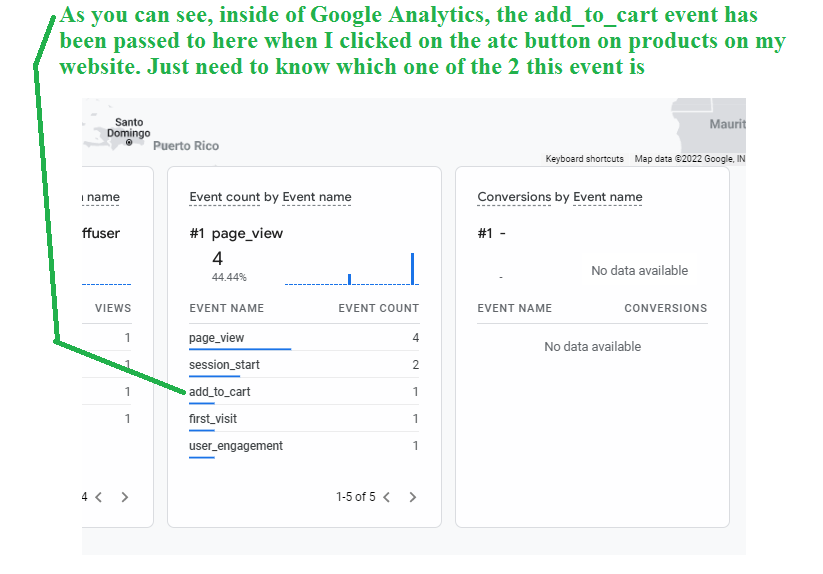Maximize Your ROI With Remarketing in Google Analytics
By taking advantage of the power of individual data and customizing ads to specific target market sections, businesses can significantly amplify their conversion prices. The journey to making the most of ROI via remarketing is a nuanced path led with understandings and opportunities that can improve the trajectory of your advertising endeavors.
Comprehending Remarketing in Google Analytics
Understanding remarketing in Google Analytics is crucial for enhancing your electronic advertising approach. Remarketing enables you to target customers who have actually previously visited your internet site or communicated with your application, presenting them with customized ads as they search various other websites or make use of other applications within the Google Display Network. This strategy aids keep your brand top of mind and motivates individuals to return to your website, eventually raising the possibility of conversion.
By using Google Analytics, you can track the efficiency of your remarketing campaigns, acquiring important understandings into individual actions, engagement, and conversions. This data allows you to improve your bidding process, messaging, and targeting strategies to enhance the total performance of your campaigns.
Furthermore, understanding the different sorts of remarketing lists offered in Google Analytics, such as conventional, vibrant, and similar audiences, allows you to create highly segmented and personalized projects customized to details customer sections. This level of granularity can considerably enhance the relevance and impact of your remarketing efforts, inevitably optimizing your return on financial investment.
Establishing Remarketing Listings
To efficiently implement remarketing projects in Google Analytics, the first step involves developing and setting up remarketing lists targeting specific user sectors based upon their interactions with your website or application. By establishing remarketing lists, you can customize your advertising efforts to get to individuals who have actually already revealed rate of interest in your service or products.
To begin, browse to the Admin section of your Google Analytics account and select the Home where you intend to produce the remarketing checklist. After that, under the Home column, click on 'Target market Definitions' and choose 'Target markets.' Next, click the red 'New Audience' switch and select 'Produce New' to specify the specifications for your remarketing checklist.

Crafting Effective Remarketing Advertisements

When crafting your advertisements, emphasis on developing eye-catching headings and engaging visuals that stand out to potential customers. Incorporate strong calls-to-action that motivate individuals to revisit your website and finish a desired activity. Utilize dynamic remarketing to show customized ads featuring products or services that users have previously viewed on your site.
Additionally, ensure that your advertisements are mobile-friendly given that a substantial section of net website traffic originates from smart phones. Test different advertisement variants to determine which messages and layouts drive the very best weblink outcomes. By continuously refining and optimizing your remarketing advertisements based upon efficiency data, you can maximize their performance and enhance your roi.
Analyzing Remarketing Efficiency

Via Google Analytics, marketing professionals can track the performance of their remarketing projects in real-time, enabling them to identify fads, patterns, and areas for renovation immediately. By evaluating the information, marketing professionals can identify which advertisements are doing well, which audience sections are responding favorably, and which channels are driving the most conversions. This degree of granularity allows marketing experts to make data-driven decisions to maximize their remarketing campaigns for far better results.
Enhancing ROI With Remarketing
Analyzing remarketing information in Google Analytics enables marketing professionals to pinpoint chances for optimizing return on investment (ROI) via strategic modifications - What Is “Remarketing” In Google Analytics?. To optimize ROI with remarketing, it is essential to understand the habits of your target click for source market. By evaluating individual interactions, such as the pages they saw, the products they saw, or the activities they tackled your site, you can tailor your remarketing campaigns extra effectively
Segmenting your audience based on their habits permits you to develop personalized and targeted ads that are most likely to reverberate with them. By revealing pertinent advertisements to specific segments of your audience, you can enhance the possibilities of conversion and eventually enhance your ROI.
In addition, examining different ad creatives, messaging, and offers can help determine what reverberates ideal with your target market. A/B screening allows you to experiment with different elements of your ads to identify what drives the greatest interaction and conversion prices.
Verdict
Finally, maximizing ROI with remarketing in Google Analytics requires a tactical method to examining user behavior, segmenting audiences, creating tailored advertisements, and maximizing project efficiency. By leveraging data-driven understandings and examining various approaches, organizations can boost their remarketing initiatives to drive greater interaction and conversion rates. This systematic approach makes certain that sources are successfully alloted in the direction of optimizing rois in remarketing campaigns.
Next, click on the red 'New Audience' switch and choose 'Create New' to specify the specifications for your remarketing list.
By continually refining and enhancing your remarketing ads based on efficiency data, you can optimize their efficiency and boost your return on financial investment.
By delving right into these insights, online marketers can obtain a thorough understanding of exactly how their remarketing initiatives are resonating with their target audience and driving conversions. To take full advantage of ROI with remarketing, it is important to understand the habits of your audience.In final thought, taking full advantage of ROI with remarketing in Google Analytics requires a calculated approach to examining user actions, segmenting audiences, developing tailored advertisements, and maximizing campaign performance.